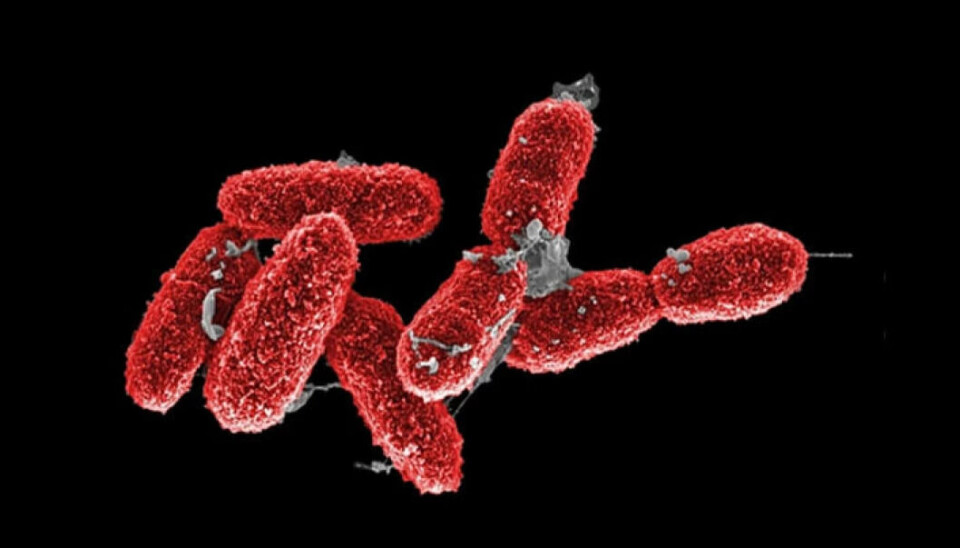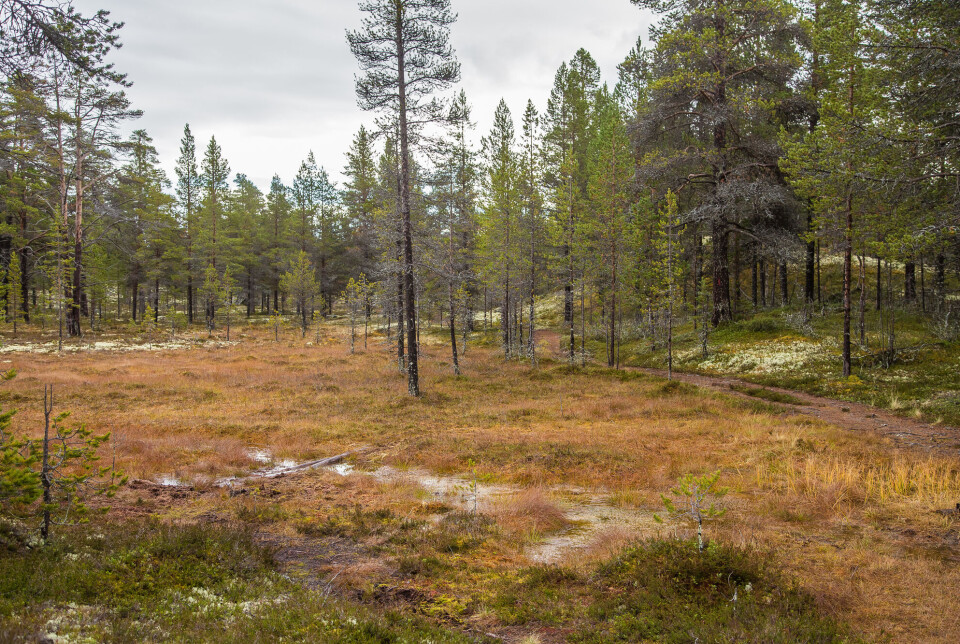
These small bacteria eat huge amounts of methane. How will they respond to climate change?
When the bacteria are thriving, they eat less.
Marshes, wetlands, lakes and rice fields are oxygen-poor environments. Microbes that make methane thrive here.
They feed on decaying plants and release methane in the process.
It's a great situation for another type of microbe that eats the methane. In bogs, these microbes reside above the methane-belching archaebacteria and remove much of the gas.
Without the methane eaters, far more greenhouse gas would reach the atmosphere.
How will these bacteria respond to climate change? Will they contribute to limiting emissions, or will they let more methane seep through?
Researchers at UiT the Arctic University of Norway have researched how methane-eating bacteria are affected by different temperatures.
Up to 90 per cent of methane removed
“You can go to a bog and measure how much methane is released. If you remove the top layer, where the methane-consuming bacteria live and measure what’s actually produced, you’ll find that these bacteria remove up to 90 per cent of the methane produced,” Alexander Tveit says.
He is a researcher at UiT.
“The methane-consuming bacteria take care of huge amounts of the gas,”he says.
Methane emissions come from wetlands, melting permafrost, cattle ranching, garbage dumps and more. Methane-producing archaebacteria are primarily responsible for generating the methane.
"Archaebacteria account for almost all the methane production in the world, whether in the stomach of a cow, in wetlands or in a lake," Tveit says.

Unexpected methane increase
Recent years have seen an unexpectedly sharp increase in the concentration of methane in the atmosphere. The increase does not appear to be due to more methane emissions from oil and gas extraction. It probably comes from biological sources.
Researchers aren't sure what is causing the increase. The methane could be coming from increased cattle farming, natural wetlands or from waste. Wetlands, and perhaps especially tropical wetlands in areas where rainfall has increased, stand out.
Tveit believes that in order to understand more about how methane emissions will evolve in the future, it’s important to learn more about how methane-eating bacteria will react.
Studied bacteria in the lab
Tveit and his colleagues at UiT have studied three bacteria from the genus Methylobacter. They all live on methane.
“The idea was to look at what these bacteria do when they’re exposed to large temperature changes,” says Tveit. “We placed the bacteria in identical conditions, with only the temperatures being different, and watched what happened.”
The researchers looked at how much methane the three bacteria ate, how fast they grew and what happened inside the cell.

Eat the most when they're having a hard time
The researchers found that the amount of methane consumed by the bacteria depended on how they were feeling.
“If they’re in a really difficult situation, like at a temperature that doesn’t suit how they’ve evolved, then they have to spend a lot of energy fixing things in their cells," Tveit says.
Therefore, when the bacteria had a hard time, they ate more methane.
This is the opposite of what we might think. It’s easier to imagine that when the bacterium is at its best, it eats the most. But that wasn’t the case.
Used 30 per cent more methane
Tveit and his colleagues examined the bacterium Methylobacter tundripaludum the most thoroughly. This species is common and lives in wetlands all over the world.
The researchers tested what happened when they kept the bacteria at a temperature of 8, 15, 21 or 27 degrees Celsius.
“If you keep the temperature at 15 degrees, it does quite well but not optimally. It grows really quickly, but has to eat a lot of methane to compensate for the fact that this isn’t its preferred temperature,” Tveit says.
When the researchers increased the temperature by six degrees, the bacteria had a great time, but their methane consumption fell by 30 per cent, even though it grew just as fast.
Mass production inside the cell
The researchers investigated what happened inside the bacterial cells.
As the temperature dropped, Methylobacter tundripaludum produced more ribosomes. They are the protein factories in the cells.
“They fill up the cells with ribosomes so that they can make more proteins and do things quickly even if the temperature drops,” Tveit says.
More methane is needed to make the extra ribosomes and proteins.
Another mechanism was that the bacteria also stored methane as glycogen, a sugar chain, to save energy for worse days.
“In some cases, the bacteria consume a lot of methane to create a store of energy,” he says.
Had to do repairs when it got too warm
The methane-consuming bacteria sometimes also start using more methane when temperatures get too warm.
“They do this to make repairs. When the temperature is higher, the molecules move more,” Tveit says.
The bacteria could then use more methane to fix things that were destroyed, or to develop a more rigid structure in the cell wall.
Should know more about the bacteria in emission areas
The study shows that depending on the type of methane-eating bacteria that dominates in an ecosystem, you can get different reactions when the temperature rises.
In some places, methane consumption may decrease, in other places it could increase. Quite a few different types of these bacteria exist.
“That’s why it’s important to know what kind of bacteria live in different ecosystems, because they don't all react the same way,” says Tveit.
He thinks it is too early to say how methane-consuming bacteria will affect global methane emissions in the future.
“I think it’s incredibly important to carry out more studies,” he says. “This is such an important part of the methane cycle that we need to know more about how these bacteria will react specifically in the areas where the most methane is being emitted.”
Tveit suggests focusing on these types of areas, such as permafrost and tropical wetlands.
“You can find key areas where major changes are taking place and study the species that live there specifically. I think that would be a good approach and a next step,” Tveit says.
———
Read the Norwegian version of this article on forskning.no
Reference:
Tveit et al. Thermal acclimation of methanotrophs from the genus Methylobacter, The ISME Journal, 2023. DOI: 10.1038/s41396-023-01363-7
































